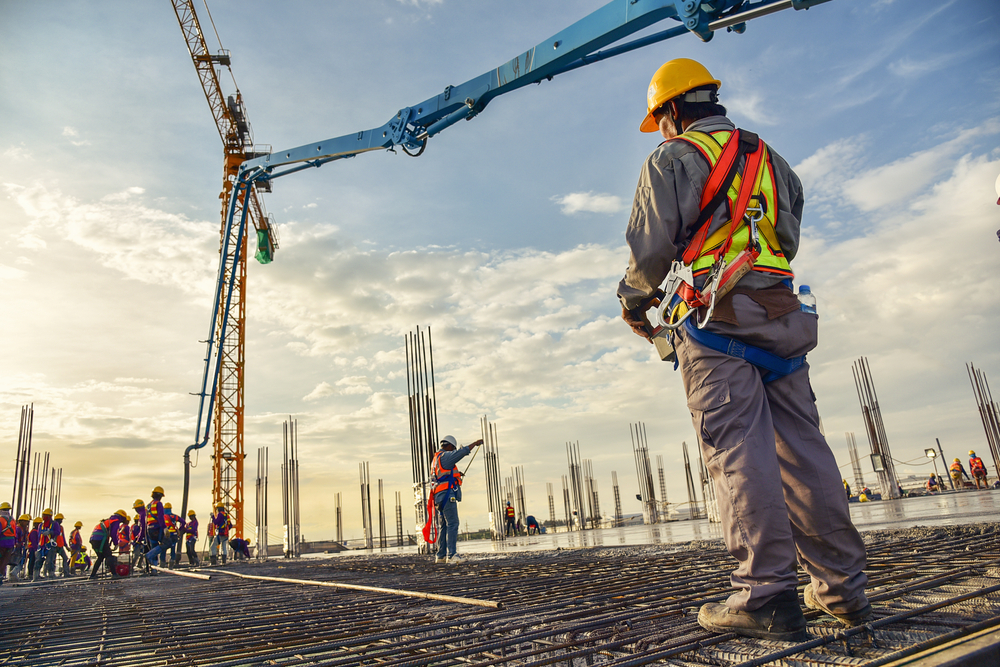Construction is one of the largest industries in Australia in terms of number of people employed within the industry. Due to the use of heavy equipment, job site conditions and physical hazards on construction sites, there is an increased potential for incidents, accidents and fatal injuries occurring on building sites compared to other industries.
There are some steps construction sites and workers can take to reduce the risks of common hazards on building sites, and minimise the incidents leading to injury. Here are some of the common construction site hazards, ways to avoid them, and information on why specialised building and construction insurance is so important.
Working at height and risk of falling
Falls are one of the leading causes of incidents and injuries in the construction industry. Due to the regularity of working at height, this is a common risk on building sites. There are many potential causes for a worker falling, including human error, misuse of equipment, uneven work surfaces or accidents. Here are some steps that can be taken to reduce the risk of a fall:
- Ensure all workers are properly trained on safe work practises for working at heights, including ladder safety
- Replace damaged equipment immediately, e.g. broken ladders
- Use fall protection equipment where appropriate
Slipping and tripping
With so much going on at any given time on a construction site, it’s easy for the work site to become a maze of slip hazards such as dirt, debris, equipment and rubbish. The risk of a worker slipping or tripping is increased in some conditions, such as inclement weather or when distracted. As well as training all workers in avoiding slips and trips, take these steps to further reduce the risk:
- Keep floor clear of debris, plastic wrapping, equipment and other objects that present a tripping hazard
- Immediately clear up spills such as oil, water or paint to avoid slips
- Be mindful of cords and wires, and don’t run them across spaces people are likely to walk regularly
Moving objects
With many heavy objects being moved around the work site, there is an increased chance of a worker being struck by a moving part. These ‘struck-by’ incidents can happen if a worker is hit by a vehicle, struck by a flying object or has something fall on them. There is an increased risk when working beneath a crane or scaffolding where overhead work is being completed. To minimise the risk of injury from moving objects:
- Ensure adequate protective equipment is worn e.g. hard hats
- Follow correct protocol
- Ensure all employees have proper training and are vigilant of their surroundings to watch for falling objects and moving equipment
- Make sure all lights or warning beepers work on equipment
Electricity
Electric shocks on the work site can lead to other incidents, such as falling from scaffolding or a ladder. Some electrical hazards that may lead to injury include the worker coming into contact with power lines, using electrical equipment incorrectly, or electricity being conducted through an object or material and then coming into contact with a worker. To reduce the chance of electricity-related incidents on the work site:
- Ensure all electrical work is carried out by a qualified employee
- Use all equipment as intended, including extension cords
- Keep all equipment away from overhead power lines
Hand Arm Vibration Syndrome
Hand Arm Vibration Syndrome (HAVS) is generally caused by the prolonged use of hand-held vibrating power tools. HAVS affects the blood vessels, joints and nerves, and reduces the ability to do fine motor work. Once it occurs, HAVS is permanent, so prevention is the best cause of action. HAVS can be prevented by:
- Ensuring tools are properly maintained
- Employees using power tools should take regular breaks and rotate how they hold the tool
- Use appropriate protection when using power tools
Other risk mitigation
As well as all the construction site safety measures mentioned above that minimise construction site hazards, it’s vital that other risk management solutions are put into place to ensure the safety of all that set foot onto the construction site.
In addition to taking appropriate safety measures, a construction insurance policy is a vital element of risk management in the construction industry. While safe work practices are a great way to reduce the risks of incidents and injuries occurring, accidents do happen – and they can be very costly to recover from. To ensure you are covered in the event that anything goes wrong, make sure you have adequate insurance protection.
Building and construction insurance
Owner-builders, contractors and construction companies can all benefit from a range of insurance cover which will offer protection for your construction workers, building and equipment. There are different forms of building and construction cover depending on your needs, including (but not limited to):
- Builders indemnity
- Single contract works
- Annual contract works
- Plant and equipment
- Workers compensation
- Public liability
There are some exclusions to what building and construction insurance will cover, but these largely depend on your individual policy. Our GSK Insurance Brokers can offer you specialised advice based on your needs to ensure every aspect of your business is protected. Get in touch with our highly experienced team of brokers to get a personalised quote for construction insurance to make sure you are covered.


